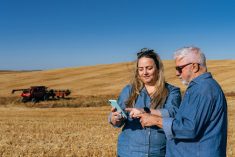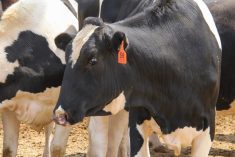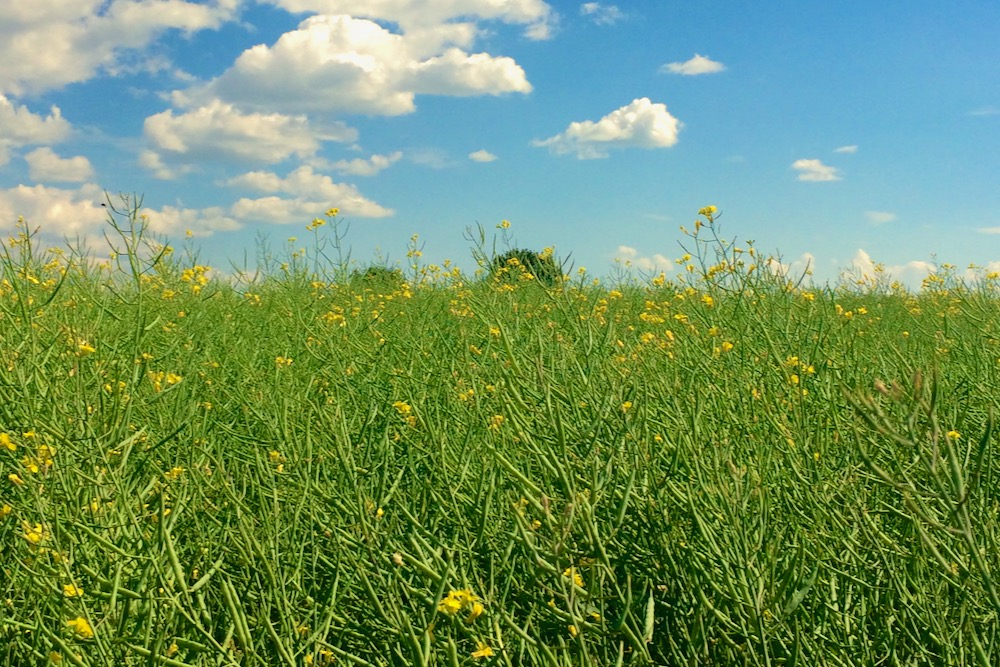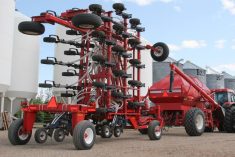We have had recent inquiries about an update on farmland values. Our previous columns on this topic have included only Saskatchewan data. As I began to search for updated data, I stumbled upon Statistics Canada data for all three Prairie provinces. As well, net income from 1926 to 2019 was available.
The raw data is the dollar value for each individual year. To convert the data to current dollars, it was necessary to use the inflation calculator, compliments of the Bank of Canada.
Read Also

Gentle treatments for pain in the neck
Heading toward year-end, people unknowingly tense up against the cold and busyness, causing neck pain that can often be treated with appropriate support and gentle mobility, athletic therapist Kathlyn Hossack says.
The calculator is quite easy to use, but there is no simple conversion that allows all the data to be calculated with one mouse click. It is necessary to input each individual year for each individual province — a big job. However, in the end, I thought it was worth the effort.
One-trick pony
For farmland prices, the data goes back to 1921. If data went back to 1917, I expect the conversion price would be very high. In those days, Saskatchewan, in particular, was a one-trick pony — wheat. The all-time-high wheat price was in 1917, at about $35 per bushel in current dollars.
Grandfather Jerome Henry had no trouble building the very classy two-and-a-half-storey, four-square house, with central heat, hot and cold running water and flush toilets. I was raised in that house, but did not realize until many years later what the history was that brought it all about. To me it was just an old house.
Land prices were low from 1925 to 1960 and the differences between provinces were not large. Manitoba lead the pack through the 1950s. The first spike was in the mid-1960s when fertilizer use was becoming common and increased yields was the result. That spike in prices was soon squashed by lack of markets for the extra wheat. We were still a one-trick pony in 1970 — wheat!

The 1970s brought great prosperity and a very sharp spike in land prices to non-sustainable levels. Alberta led the pack and Saskatchewan was much below. People still harp that farmland prices are too low in Saskatchewan and that they will catch up. We must realize Saskatchewan was dealt the biggest chunk of the famous Palliser Triangle (i.e. brown and dark-brown soil zones).
When moisture is the overriding limiting factor to crop yield, even the best land will not pay the mortgage in the long run. The past decade of extra precipitation has led to prices that, I think, are not sustainable.
A more interesting story
Net farm income has a more interesting story. Except for the 1930s, Saskatchewan leads the pack, especially in good times. That is simply a function of acres. Saskatchewan has as much farmland as the other two combined.
The 1940s (Second World War) and 1950s were good times, but that was not reflected in land prices. All old-timers who remember 1942 as the mortgage lifter year, realize the prosperity of the 1940s and early 1950s was needed to clear the debts of the Dirty Thirties.
As well, the depression years left no appetite for taking on new debt and, once again, risk losing it all. I was born in 1940. I never saw the depression years but heard a lot about them. When Dad showed me the cheque that cleared the mortgage on Brunswick Farm, he said there will never be another.

The most prosperous times in Prairie agriculture were the 1970s. Grain prices were up, rain was good and farm expenses were a fraction of what we have today. In the 1970s, it was possible to buy the biggest Lincoln car with all the bells and whistles with 1,500 bushels of wheat. In today’s world, 1,500 bushels of wheat would not buy a stripped-down mini car.
As we have shown in previous columns, the years from 1975 to 2005 were a net cumulative drought. In the early 1980s, interest rates were on the ceiling. It will be hard for the current kids to realize that interest rates were as high as 20 per cent.
Farmland that had been purchased for a price too high resulted in huge default. The back page of the Western Producer was full of ads for land that had been foreclosed by lenders. One week it would be FCC land and the next week RBC.
In 1988, it was the year of no crop over much of southern Saskatchewan. The price of grain does not matter much when you have none to sell.
In the early 1990s, I was still teaching at the University of Saskatchewan. My advice to anyone thinking about farming was to do it now. Land could be bought for a song. But the world does not work that way. When great prosperity returns to the farm, so do the farm kids. Let us hope the cycle does not flip again.
A cautionary note
The past decade has brought unparalleled prosperity to western Canadian farms. Part of that is due to the complete change of farming methods with continuous crop, zero-till planting, improved varieties, proper fertilizer rates, good weed control and ready markets.
However, we must realize the part that Mother Nature has played by providing irrigation without the need of a pivot and a boost in atmospheric CO2 to further improve yields.
Once again, I repeat my cautionary note — beware the other side of the average. At the time of writing (March 17), we are about the same place with respect to moisture that we were at this time in 1988 — no soil moisture at freeze-up and not much snow over the winter.
In 1988, wheat yields at Swift Currrent, Sask., were about 10 bushels per acre and at Saskatoon wheat was five bushels per acre.
There is still time for that to change, but to get an average crop for 2021, we need much above-average precipitation, and it must be timely. The days of good crops with little or no rain are over for now.
Of course, we are talking only about the area of Saskatchewan and Alberta that appears in red on the Soil Moisture Map as of freeze-up 2020. The January 2021 issue of Grainews has that map.
Northwest Saskatchewan, particularly Meadow Lake, and northern Alberta areas have had too much rain in recent years and have much better prospects. As always, in farming, Mother Nature is in charge. A rain delay in seeding will be welcome in many areas.
















